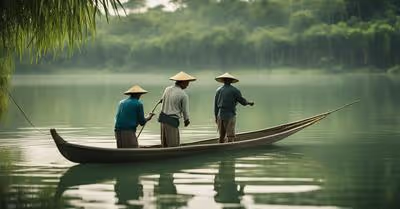
Key Takeaways
- Unique fishing techniques are utilized worldwide.
- Each method is adapted to local fish and environments.
- These techniques are steeped in tradition and innovation.
Ever wondered how anglers around the world reel in the big ones?
Fishing isn't just a pastime; it's an art, with a palette of techniques as diverse as the lakes they're practiced on.
With so many styles, you might just find a new method to shake up your next fishing adventure.
Across the globe, anglers have developed unique lake fishing techniques tailored to their local environments.
Whether it's the hand-to-catfish combat of noodling in the USA or the stealthy grace of fly fishing streams in Europe, these methods all have one thing in common: a deep understanding of the quarry and its habitat.
Rest assured, you're getting the real scoop here.
These fishing practices have been honed over centuries, weathering the test of time and technology.
They're not just effective; they weave together the culture, geography, and the very essence of the locations where they originated.
So grab your tackle box and let's cast a line into the waters of international angling tradition.
Noodling (USA)
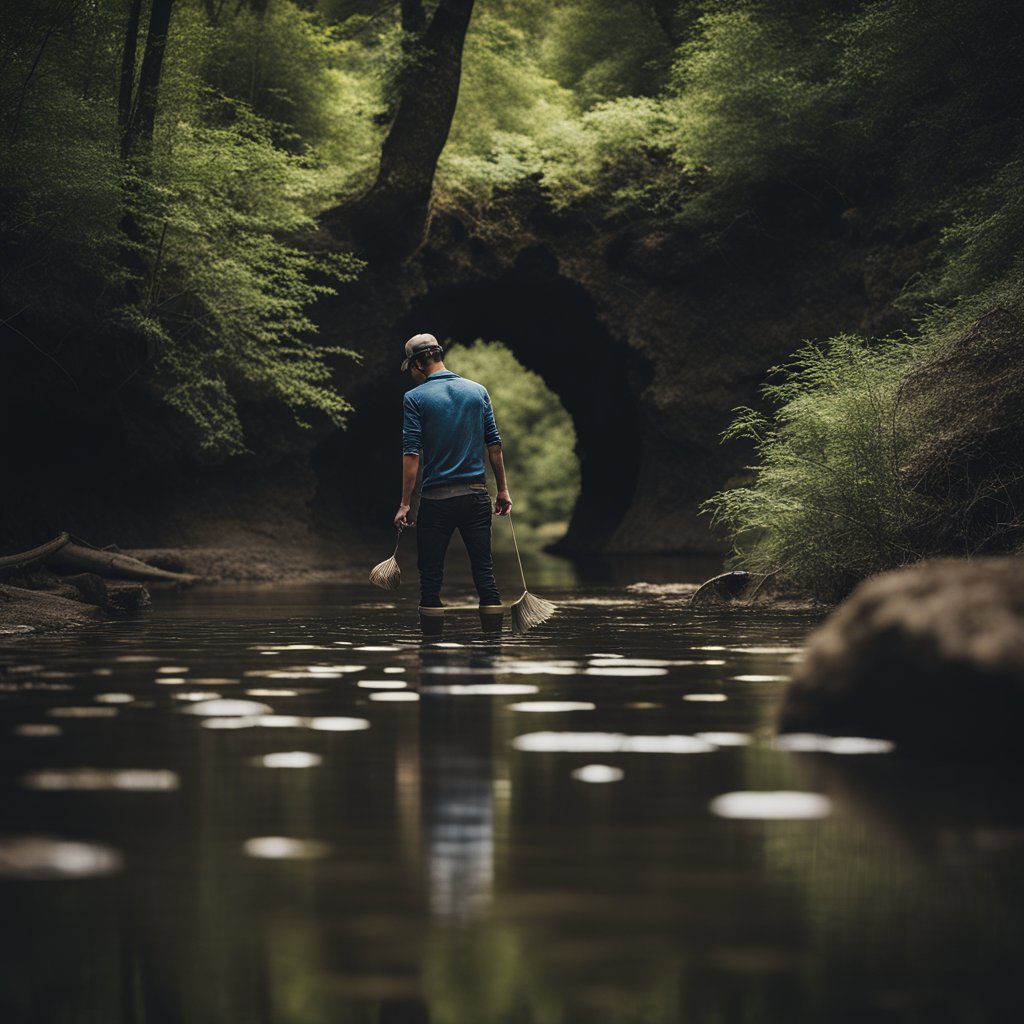
Ever tried catching a slippery fish with just your hands?
Well, if you haven't, let's talk about noodling.
It's a fishing technique that may sound a little bonkers, but it's quite the adventure!
Imagine wading into the warm, murky waters in the heart of the USA, getting up close and personal with some pretty hefty catfish.
That's noodling for you!
Here's how it goes down:
- Find shallow water: Look for a spot where catfish like to hide, like under rocks or in holes.
- Get your hands ready: Be prepared for the unexpected tug of a catfish that can weigh between 10 to 100 pounds!
- Be safe: It's easy to get carried away with the thrill, but remember, safety first. Sturdy gloves can be a hand-saver.
So, you feel around in the water, and then—boom!—you meet a catfish face-to-face, or should I say, hand-to-fin?
These guys aren't just big; they're powerful enough to give you a tussle before you emerge victorious with your catch.
But remember, as fun as it sounds, noodling isn't a walk in the park.
It's illegal in some places, so always check local regulations before you dive in—literally.
Would you brave the underwater hide-and-seek for a chance to befriend a catfish?
It's certainly one for the bucket list!
Spearfishing (Polynesia)

Have you ever imagined yourself diving into crystal-clear waters, armed with nothing but a spear, in pursuit of the day’s catch?
Well, that's exactly what spearfishing in Polynesia is all about.
It's a technique that has sustained and enriched communities for generations, and here's how it works.
With its roots steeped in tradition, spearfishing is not only about catching fish but also about a deep respect for the ocean.
In Polynesia, the clear, shallow waters are perfect for this kind of fishing.
Typically, you'd use a spear or harpoon—sometimes even fashioned from local materials.
And if you're wondering, yes, this is as hands-on as it gets.
It’s all about being in the water, surrounded by vibrant marine life, as you quietly stalk your target.
What You Need:
- A strong spear or harpoon
- Fins for swimming
- A mask to see underwater
- A snorkel to breathe while on the surface
What To Do:
- Scout for clear shallow waters.
- Look for areas with abundant fish.
- Dive down, spear in hand, and approach fish calmly.
- Aim carefully and launch your spear or harpoon with precision.
Remember, in Polynesia, spearfishing isn't just about the catch; it's an immersive experience that connects you with the marine world in a thrilling and profound way.
So, next time you're there, why not give it a try?
Who knows, you might just discover a newfound passion—or at least catch dinner!
Ice Fishing (Nordic Countries)
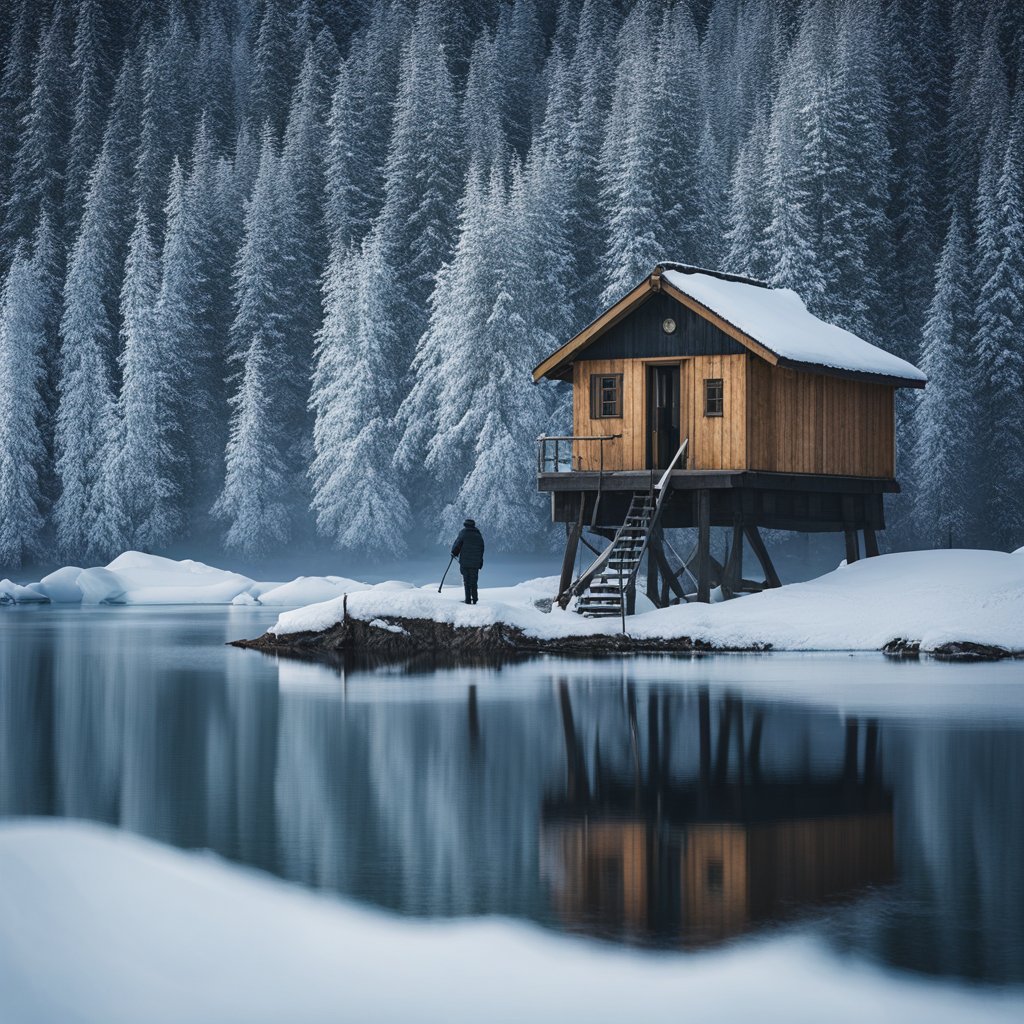
Hey there!
Let's chat about something cool—ice fishing in the pristine Nordic countries.
Ever wanted to catch a fish on a lake so frozen you could dance on it?
Imagine a crisp winter morning; you've got your warmest gear on, and you're treking across a solid sheet of ice.
Sounds like an adventure, right?
Up in Finland, Sweden, and Norway, locals make an art out of this chilly pursuit every winter.
Here’s some friendly advice on how to join in:
- Dress Like an Onion: Layers are your best pals in the icy tundra. You'll want to keep cozy!
- Grab a Permit: Places like Carì Lake in Switzerland require a short-term permit.
- Timing Is Key: Aim for the sweet spot when fish are most active, often early morning or late evening.
- Choose Your Spots: Ice fishing hubs like Luleå are famed for catches like perch and pike.
So, what can you expect to reel in?
- Perch and Pike are common catches.
- Not to forget the trout and brown cousins.
- Grayling and whitefish might give you a surprise.
- Go further North and Arctic char could be your prize.
And here's a pro tip: while fishing equipment is essential, so are snowshoes.
Trudging to your spot without them?
You’ll wish you had.
Trust me.
Ready to drill a hole into the ice?
Go ahead and dip that line.
Who knows, maybe the fish are just as curious to meet you as you are to meet them! 🎣
Remember, ice fishing isn't just about the catch; it's about the serene beauty of the beautiful Nordic landscape.
So take a moment, breathe in the crisp air and indulge in the tranquility.
Happy fishing!
Trout Tickling (UK)
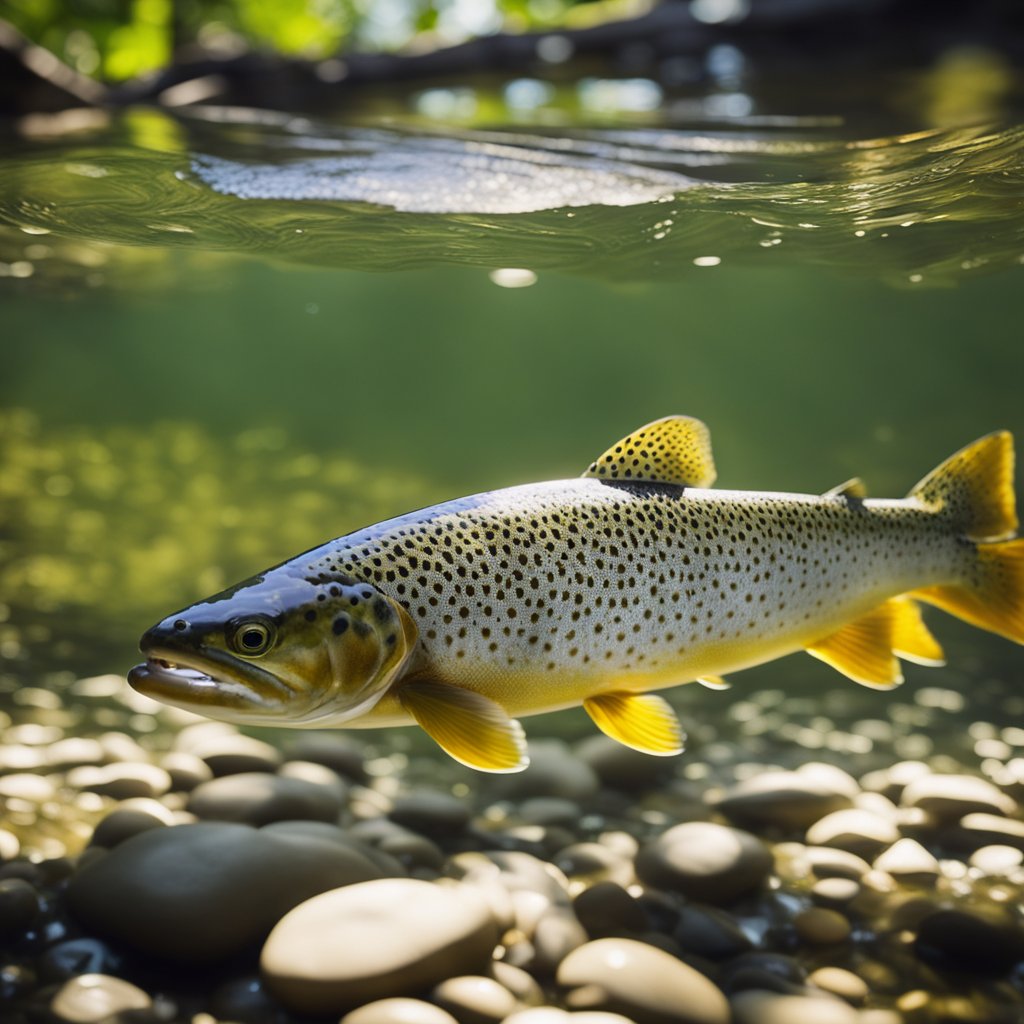
Ever tried to make a fish laugh?
Well, trout tickling might be the closest you'll get!
This quirky and ancient fishing method, cherished in the UK, is all about stealth and finesse.
Imagine you're wandering along a serene stream in the countryside, spotting the sleek shape of a trout in the shallow water.
What do you do?
Get ready to tickle!
Trout tickling involves a careful approach.
Here's how you can attempt this intriguing technique:
- Find a shallow stream with accessible banks.
- Gently slide your hand into the water, inching toward the trout.
- Lightly rub the trout's underbelly until it relaxes.
- Carefully lift the trout out of the water once it's calm enough.
Sounds simple?
It's anything but!
This technique is a real test of patience and a soft touch, but the payoff is incredibly rewarding.
It's not just about catching the fish; it's about connecting with nature in a truly unique way.
Don't forget though, trout tickling is no longer strictly legal everywhere, and it's illegal in many parts of the world, including several U.S. states.
So if you're looking to try it out, make sure you're clued up on the local rules.
While you may not catch your dinner this way every time, it's a delightful nod to the ways of old and a reminder of the simple joy found in the rhythms of nature.
Who knew fishing could be so hands-on and personal?
Talk about getting up close and personal with your catch!
Coracle Fishing (Wales)

Did you know there's a fishing technique in Wales that's been around since the Romans took a stroll in their sandals?
It's called coracle fishing, and it's a tradition that has quite literally stood the test of time!
Imagine yourself in a small, lightweight boat called a coracle, made from a blend of woven wood laced with a waterproof material.
Intrigued?
Let's dive into what makes it so unique!
First off, these boats are pretty cozy – they're designed for just one person.
But don't let the size fool you; these coracles are sturdy little vessels that date back over 2000 years.
They're a testament to the ingenious design of the past.
Their shape and make allow you to glide silently over the water, making it easier to sneak up on your unsuspecting fish friends.
And yes, stealth is the name of the game in coracle fishing.
Here's how you can be part of this age-old fishing method:
- Find your Balance: Getting into a coracle might feel a bit like learning to ride a bike for the first time, but once you've got it, it's a breeze!
- Grab your Gear: Usually, you'll only need the basics – a net or line.
- Choose the Right Time: Fishermen traditionally head out during summer nights and avoid weekends. It's like having a secret rendezvous with the river.
- Respect the Tradition: Remember, this isn't just fishing, it's a cultural heritage. Only a few licenses for coracle fishing are issued now, so if you get the chance, treasure it!
Did you catch all that?
Yes?
Brilliant!
If you ever find yourself in Wales with an itch for something different, why not give coracle fishing a go?
You'll be part of a tradition that's been passed down for generations, and hey, who doesn't love a serene night on the water?
Just don't rock the boat too much – it's a single-seater for a reason!
Gleaning (Philippines)
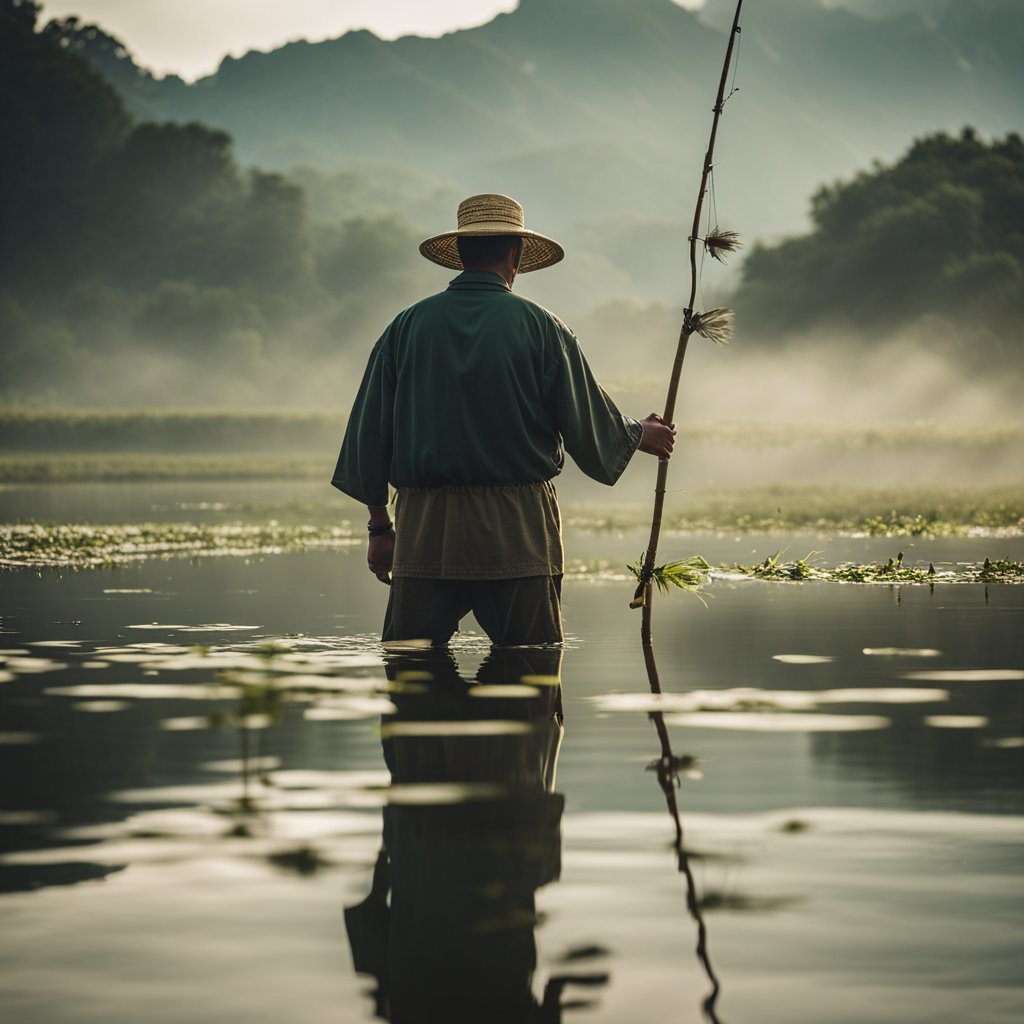
Ever tried treasure hunting on a beach?
What about hunting for fresh seafood instead?
That's exactly what you're doing when you're gleaning in the Philippines!
It's like a seaside scavenger hunt where the prizes are delicious and you don't need any fancy gear.
Imagine walking along a beautiful, rocky shoreline or wading in shallow water with a bucket in hand.
You're not alone; alongside you are locals, often women and children, searching for fish or shellfish at low tide.
It's not just a pastime — it's a way of life that contributes to daily diets and livelihoods.
In fact, there's a community around the island of Malalison where gleaning is big.
Here's what you'd likely find in their buckets:
- Small fish
- Shellfish
- Seaweed
- Other edible marine critters
Fun fact: Did you know that 14% of the diet in some Filipino fishing villages comes from gleaned seafood?
That's a pretty big slice of the dinner pie, right?
Not to mention, the seafood sometimes gets traded for other goodies.
It's like old-school bartering at its best, ensuring nutritious meals for families.
So, no swimming or fancy diving equipment is necessary for gleaning.
All it takes is a keen eye, a bit of patience, and the timing of the tides.
It's sustainable, eco-friendly, and a great way to connect with nature and Filipino culture.
Plus, who would say no to fresh seafood caught by their own hands?
Gleaning isn't just for the locals, though.
If you're visiting and looking for an authentically immersive experience, why not give it a try?
Just remember to respect the local community and the environment.
Happy gleaning!
Drone Fishing (Australia)
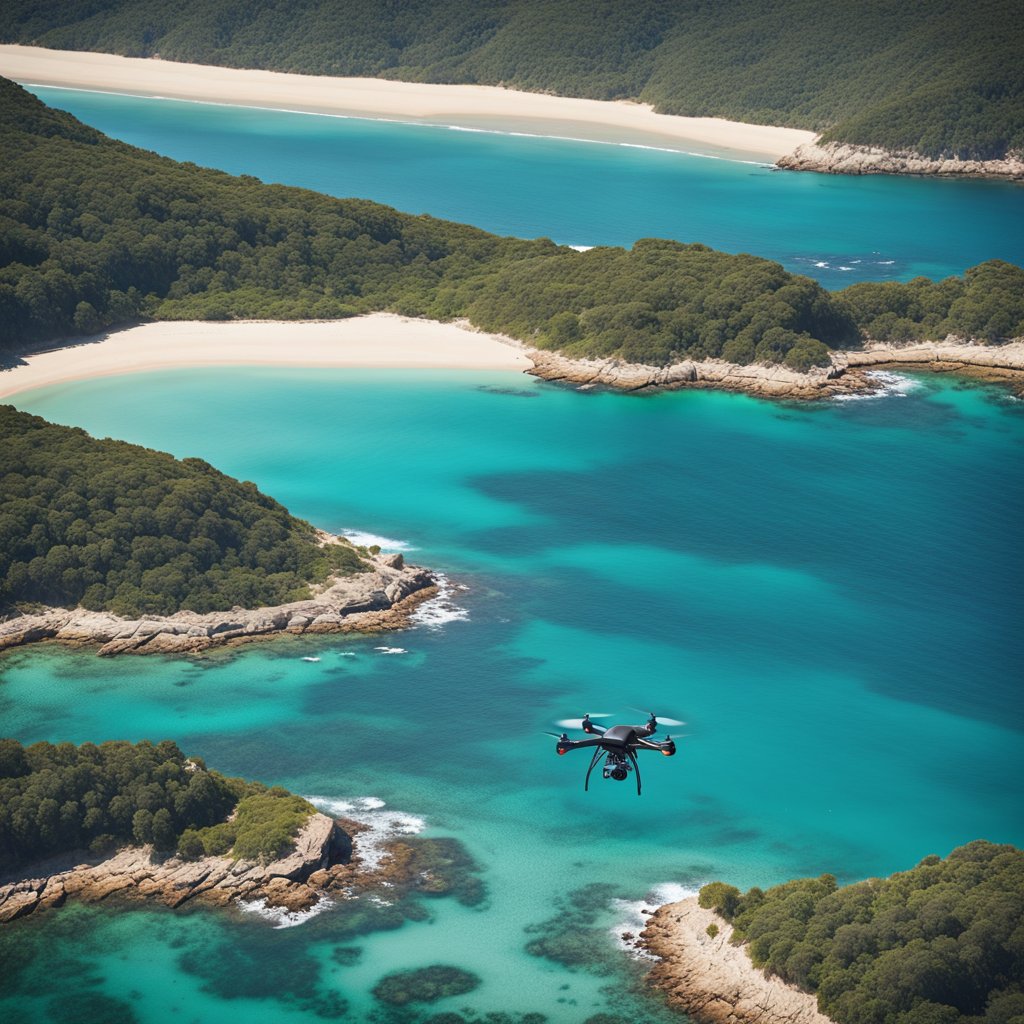
Ever imagined casting your line way beyond the surf, right from the comfort of your beach chair?
Welcome to the revolutionary world of drone fishing in Australia!
Here, technology meets tradition, and you're in for a thrill.
What's drone fishing, you ask?
Imagine flying a drone to the perfect spot in a vast Australian lake where the big fish play.
With a nifty drone, you can drop your baited line into the water without even setting foot on a boat.
Pretty cool, huh?
Here's the lowdown on why this method is flipping the fishing scene on its head:
- Reach: Drones can carry your line to those otherwise inaccessible spots.
- Precision: Control where you drop your bait for the best catch.
- Innovation: This isn't your grandpa's fishing trip—we're talking cutting-edge technology.
Getting Started:
- Choose a drone capable of handling the bait and line weight.
- Attach your fishing line securely.
- Scout for the perfect fishing spot using your drone's camera.
- Release your bait at the touch of a button.
Remember, it's not just about the cool factor.
This method allows you to fish in deeper waters where the big ones like to hang out.
So, ready to up your fishing game and reel in the catch of the day with a bird's-eye view?
Take to the skies and let your drone be your guide in Australia's vast blue playground!
Lift Net Fishing (China)
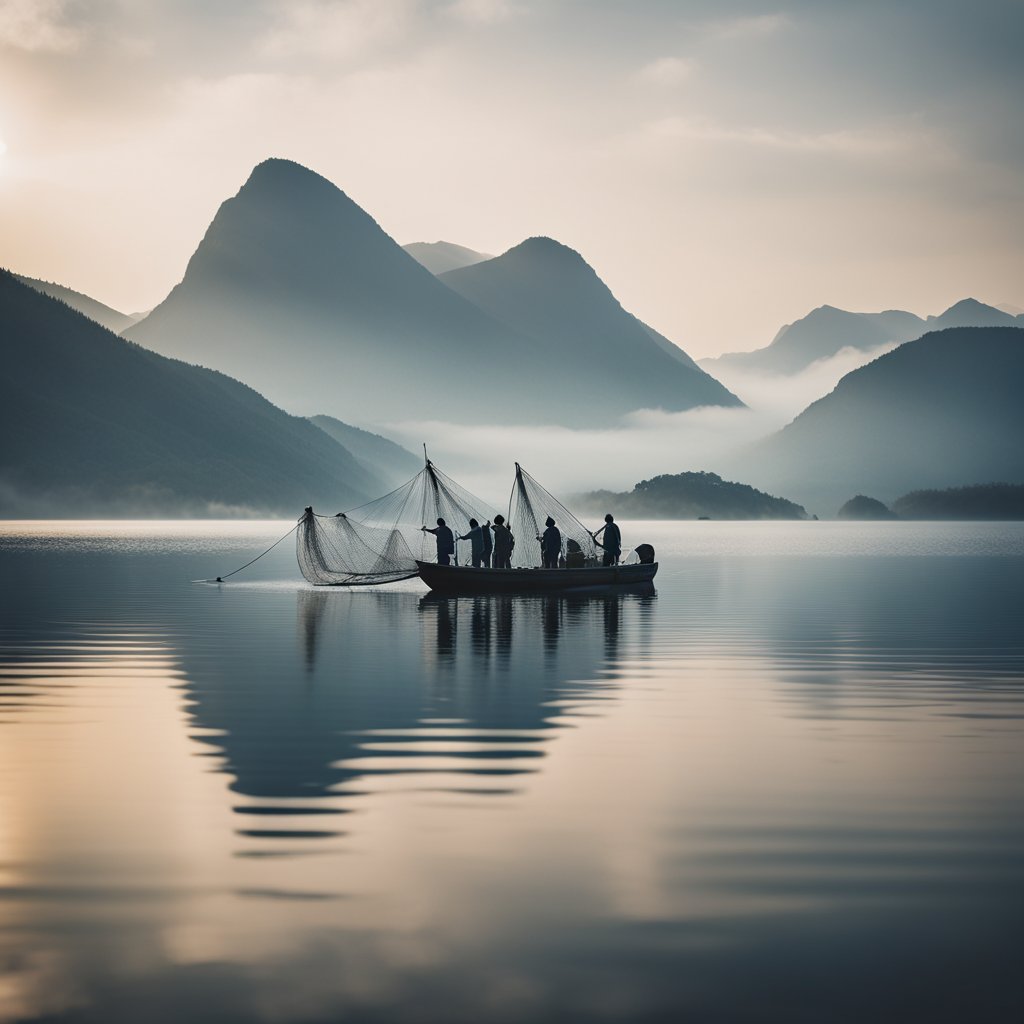
Have you ever seen a dance between bamboo and water?
Well, in the scenic lakes of China, lift net fishing is just that!
This ancient method isn't just about catching fish; it's a harmonious blend of tradition and technique.
Imagine a big, square net, like a blanket ready to tuck in the swimmers of the lake.
This net isn't for snuggling, though—it's for scooping up fish!
Crafted meticulously with bamboo rods that form the frame, the net eagerly awaits beneath the water's surface.
Here's what happens next:
- The net is quietly lowered into the lake, as inconspicuous as a stealthy cat.
- Fish, oblivious to the trap, swim right above the net.
- With a sudden and brisk pull, the net is raised! And voilà, it's a surprise party for the fish, but the kind where they end up on land.
It's all in the timing and the skill of the fisher, who knows their craft as well as their own heartbeat.
This isn't a newfangled trend but a tried-and-true technique passed down through generations.
You're witnessing history in motion!
But don't let its simplicity fool you.
This method demands precision and an intimate knowledge of the lake's rhythm.
Think of lift net fishing as a delicate balance between knowing the waters and respecting the catch.
It's a practice that maintains a sustainable relationship with nature, ensuring that the lakes continue to teem with life.
Isn't it fascinating how such historical methods of fishing are not only about the catch but also about sustaining a way of life?
You're not just looking at a fishing technique; you're glimpsing a story, a legacy that continues to thrive amidst the ripples of China's beautiful lakes.
Fish Traps (Africa)

Have you ever wondered how local fishermen catch their daily haul in the vast lakes of Africa?
It's with ingenuity and heritage they craft their magic – using fish traps!
Imagine walking alongside the serene waters and spotting these woven structures, bobbing gently in the shallow ends.
These are no ordinary baskets; they're a testament to traditional African wisdom.
Crafted from reeds and other gifts of nature, fish traps are a window into a time-honored technique.
Here's how they work: They're strategically placed where our finned friends love to meander.
And just like that, as the fish swim in, they find themselves in a natural maze, eventually cozying up within these traps.
- Material: Locally sourced reeds
- Placement: Shallow waters
- Design: Funnel-like opening
Sure, it seems simple, but the design is pure brilliance!
The narrow entrance is a one-way ticket – easy to swim into but a puzzle to escape.
And don't you think for a second that this is a one-size-fits-all situation.
Oh no!
Each trap is a reflection of the lake it calls home and the particular fish it seeks to embrace.
So, the next time you're relishing a lakeside breeze, take a moment to admire these silent hunters of the water.
They're not just traps; they're a story of sustainability, a dance with nature, where everyone – fish included – plays their part.
Isn't it amazing how such simple techniques can be so effective?
Now, that's a clever catch!
Fly Fishing (USA/Europe)
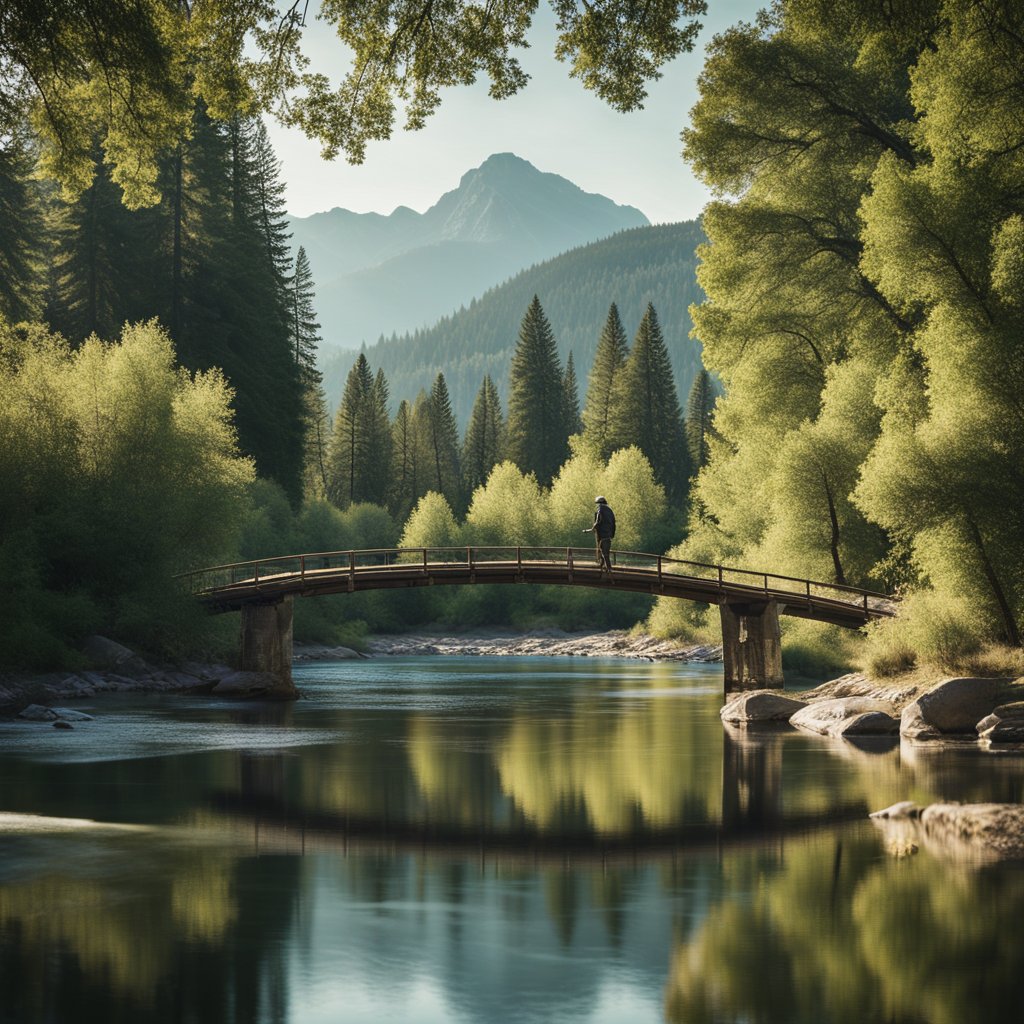
Have you ever dreamed of standing knee-deep in a serene river, casting a line into the crisp morning air?
That's the essence of fly fishing, a sport that's as much about finesse as it is about patience.
Both in the USA and Europe, fly fishing has turned into an angler's retreat.
In the USA, you're likely to find enthusiasts ready to share stories of pursuing bass and trout.
It's a bonding activity, where the thrill is in the precision of your cast and the chase of the elusive fish.
Europe's fly fishing scene offers a different charm with its historical rivers and lakes.
Take Iceland, for example; it's a hub for brown trout and sea trout fishing, especially during the long days of summer where you can fish under the midnight sun from late May to early September.
Scotland, with its abundance of wild brown, rainbow, and sea trout, is another fishing paradise.
Here's a quick breakdown:
- Iceland: Best for sea trout, brown trout, summer months, midnight sun fishing.
- Scotland: Ideal for wild brown, rainbow, and sea trout, rich in fishing traditions.
- Austria's River Traun: Alpine beauty, a top choice for river fly fishing.
Now, let's talk gear.
A lightweight rod, a reel with smooth drag, and a selection of artificial flies are your basic toolkit.
Matching your fly to the local insect life can make all the difference.
Remember, it's not just about the catch; it's about the rhythm of the river, the dance of the line, and the connection with nature.
Ready to cast away?


